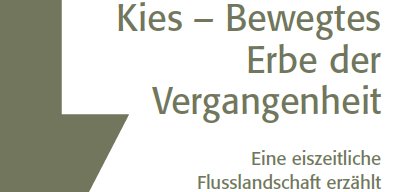New Geopark flyer on the topic of "Gravel
It is known as a building material, in Austria it is called rolled gravel, it comes in fine, medium or coarse and children like to collect it from river courses: gravel. But only a few know that it is an important heritage of the Earth's recent history, sediments of the riverine landscapes, some of which have a long transport route behind them to their deposits in the plains.
The GrenzWelten National Geopark now wants to close this knowledge gap with its latest flyer from the "Highlights in the Geopark" series. Under the title "Kies - Bewegtes Erbe der Vergangenheit, Eine eiszeitliche Flusslandschaft erzählt" (Gravel - Moving Heritage of the Past, An Ice Age River Landscape Tells the Story), not only geologically interested people learn exciting details about the hand-flattering rounded stones.
The handy leaflet traces the history of the development of gravel, but also of sand, from its beginnings in the solid rock of the low mountain ranges to its transport by flowing waters, during which some boundaries are crossed in valleys, to the formation of deposits of the material in wide plains. For example, huge deposits of gravel in the Wabern Plain between Fritzlar, Borken and Felsberg testify to the fact that the sediments must have travelled a long way over a long period of time and in large numbers. Gravel and sand as a resource is another topic of the flyer - as valuable bulk raw materials, the two sediments are widely used in the construction industry.
The leaflet focuses on the more recent chapters of our regional earth history and highlights the diversity of geological forms in the GrenzWelten. It is available free of charge from the Geopark project office, the municipal administration in Wabern or the Hessian Lignite Mining Museum in Borken.
